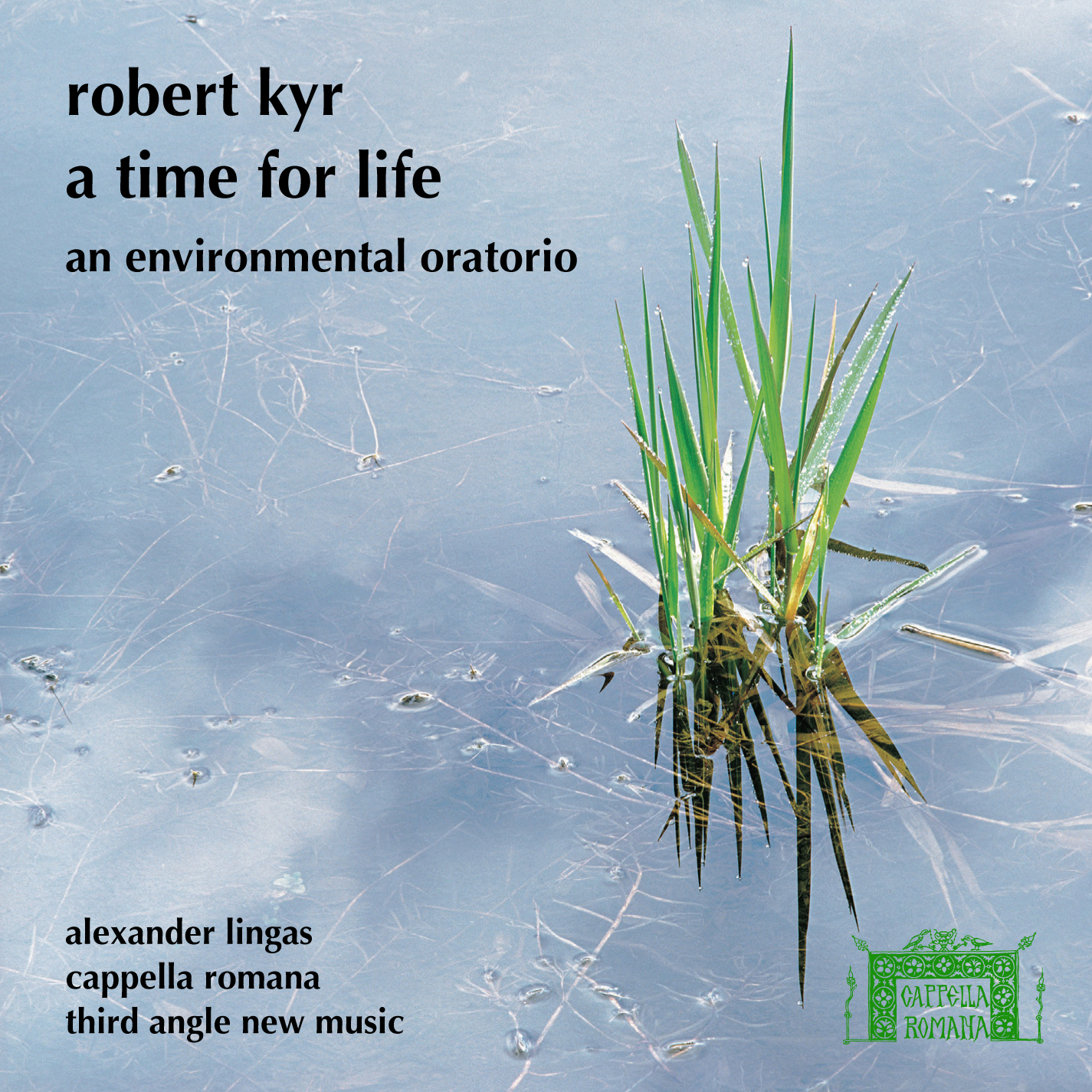Your cart is currently empty!
A Time For Life — Structure
 The composite text for A Time for Life was adapted from a wide range of sources that explore the relationship of humanity to nature. The work is structured in three large-scale parts, as follows:
The composite text for A Time for Life was adapted from a wide range of sources that explore the relationship of humanity to nature. The work is structured in three large-scale parts, as follows:
Part I: Creation
In the first part, the nature of creation is celebrated through praise for the Creator and through rejoicing in the pure creative force of existence. The text was adapted from several sources: a Sioux Prayer; an Eskimo Song; Psalm 8; An Akathist in Praise of God’s Creation (attributed to Metropolitan Tryphon, 1934, but possibly written by Father Gregory Petrov who died in a Soviet prison camp in 1942); and the Orthodox “Service for the Environment” that was written in 1961 by the monk Gerasimos at the monastery of the Skete of Little Anne on Mt. Athos (Greece).
Part II: Forgetting
The second part explores humanity’s present inability to live in harmony with nature as “forgetting” and makes a recurrent appeal to the Creator: “…We forget who we are. Help us to remember…” Forgetting is structured in six sections and each consists of two parts—a “supplication” (a solo followed by canons) paired with a “witness” account (an aria, duo or trio). The sources for Part II are: the U.N. Environmental Sabbath Program; the Books of Jeremiah and Isaiah; the Chinook Psalter; and an Ojibway Prayer, as well as the Orthodox “Service for the Environment.”
Part III: Remembering
The third part begins with the Dance of Life followed by the Canticle of Life. The “dance” features a double chorus singing call-and-response (three women juxtaposed with three men), whereas the “canticle” is structured in four parts, each of which contains a soliloquy (solo), a section of canons, and a chorale (full, eight-voice choral texture). The text sources for Part III are a Pawnee/Osage/Omaha Indian Song, a Navaho Chant, the Book of Ecclesiastes, and the Orthodox “Service for the Environment.”
A Time for Life is a “musical play” that traces a journey from the glory of Creation as it was given to humanity (Part I) through our destructive behavior as demonstrated by the current global environmental crisis (Part II: Forgetting). The potential for destruction is total: the forest (Supplication & Witness II); the oceans (Supplication III); animal life (Supplication IV); the air we breathe (Supplication V); and the entire planet itself as plagued by corruption and abuse (Supplication VI). No one can escape the responsibility for the earth (“My people are fools,/Senseless children/Who have no understanding”), especially the leaders (“No more will the fool be called noble,/For he speaks foolishly,/Planning evil in his heart”). The ruling class of all nations is particularly culpable in its folly (“Howl, you shepherds, and wail!/Roll in the dust, leaders of the flock!/There is no flight for shepherds,/No escape for leaders of the flock./There is no escape!”).
— Robert Kyr

You must be logged in to post a comment.